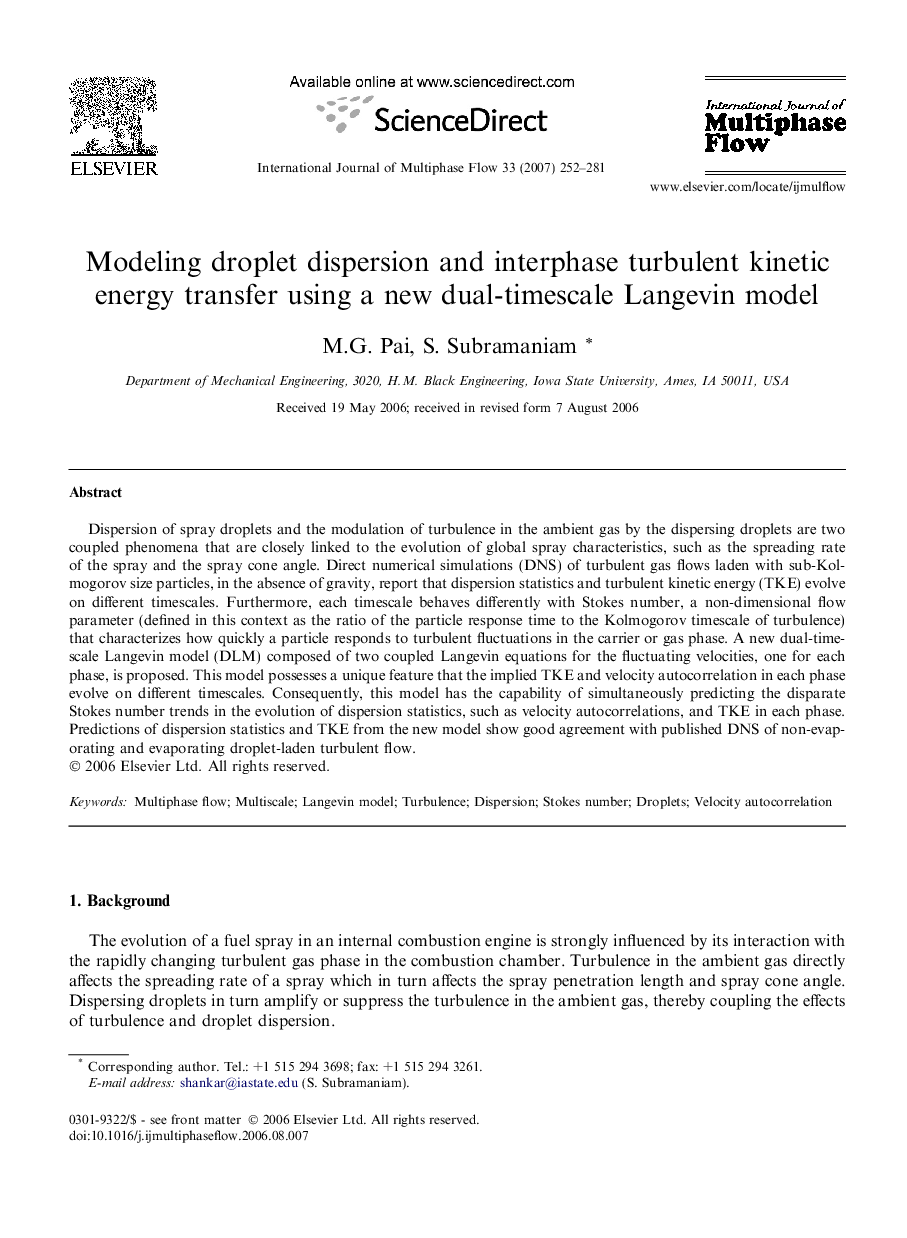| Article ID | Journal | Published Year | Pages | File Type |
|---|---|---|---|---|
| 667819 | International Journal of Multiphase Flow | 2007 | 30 Pages |
Dispersion of spray droplets and the modulation of turbulence in the ambient gas by the dispersing droplets are two coupled phenomena that are closely linked to the evolution of global spray characteristics, such as the spreading rate of the spray and the spray cone angle. Direct numerical simulations (DNS) of turbulent gas flows laden with sub-Kolmogorov size particles, in the absence of gravity, report that dispersion statistics and turbulent kinetic energy (TKE) evolve on different timescales. Furthermore, each timescale behaves differently with Stokes number, a non-dimensional flow parameter (defined in this context as the ratio of the particle response time to the Kolmogorov timescale of turbulence) that characterizes how quickly a particle responds to turbulent fluctuations in the carrier or gas phase. A new dual-timescale Langevin model (DLM) composed of two coupled Langevin equations for the fluctuating velocities, one for each phase, is proposed. This model possesses a unique feature that the implied TKE and velocity autocorrelation in each phase evolve on different timescales. Consequently, this model has the capability of simultaneously predicting the disparate Stokes number trends in the evolution of dispersion statistics, such as velocity autocorrelations, and TKE in each phase. Predictions of dispersion statistics and TKE from the new model show good agreement with published DNS of non-evaporating and evaporating droplet-laden turbulent flow.
